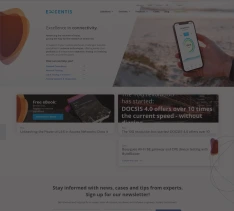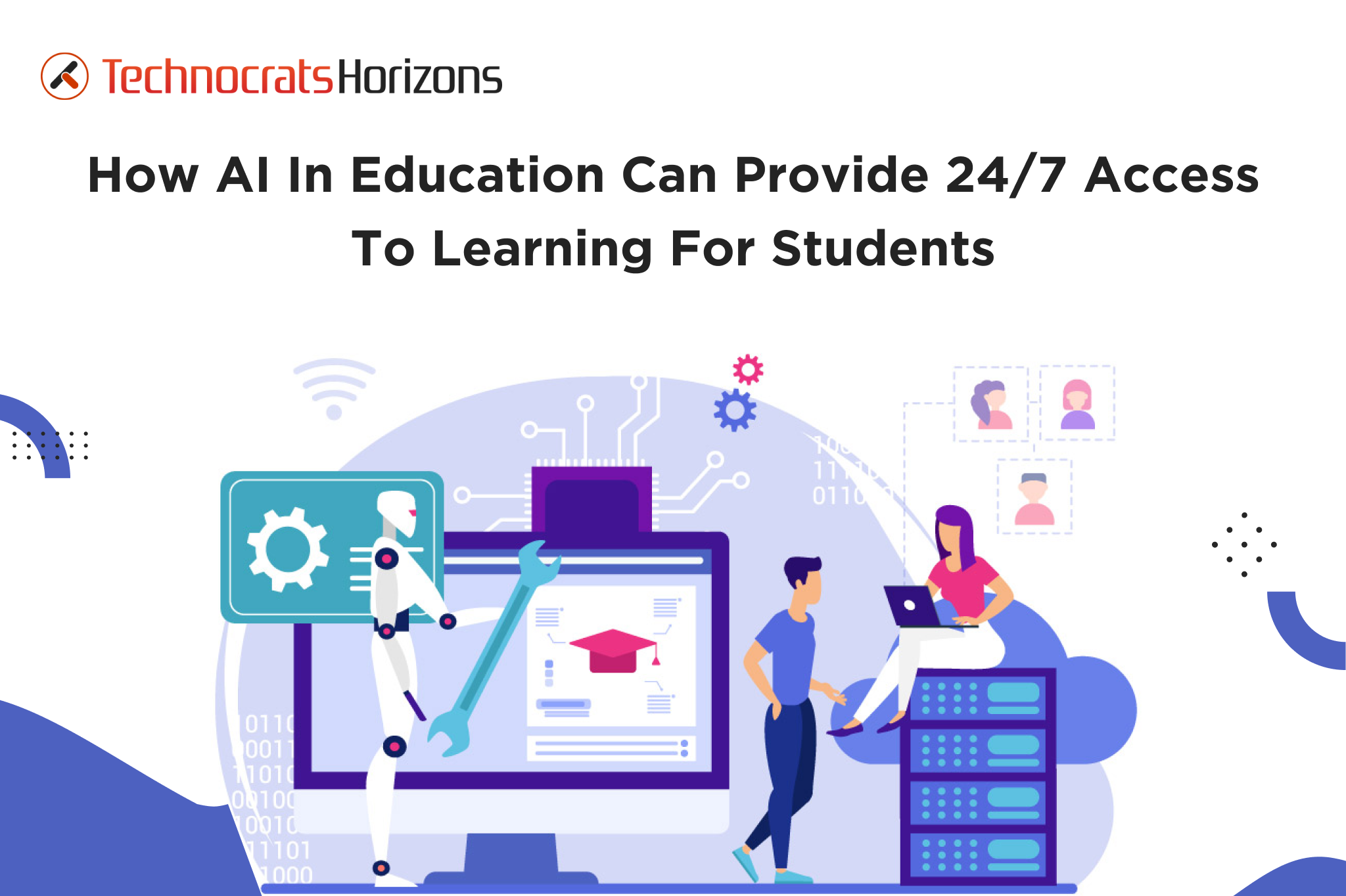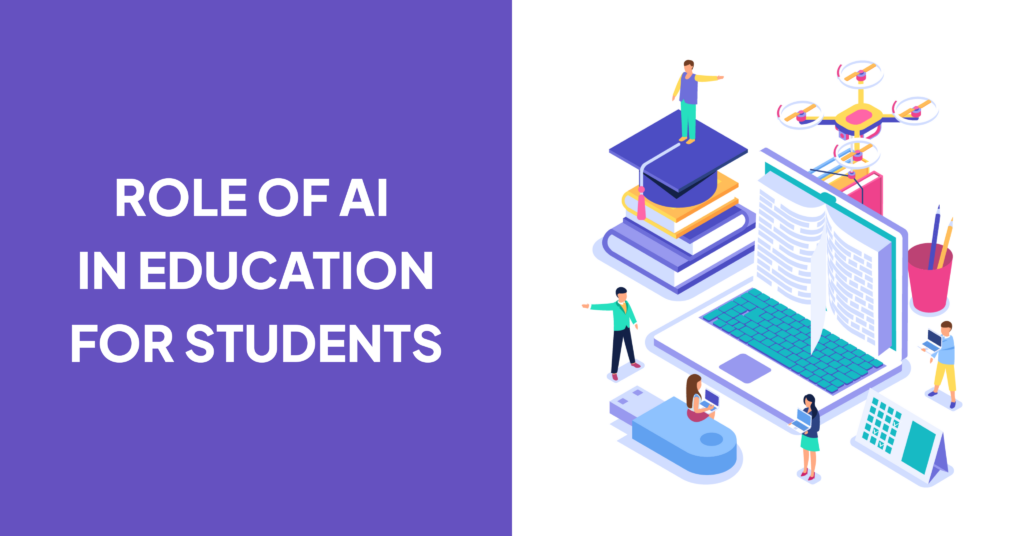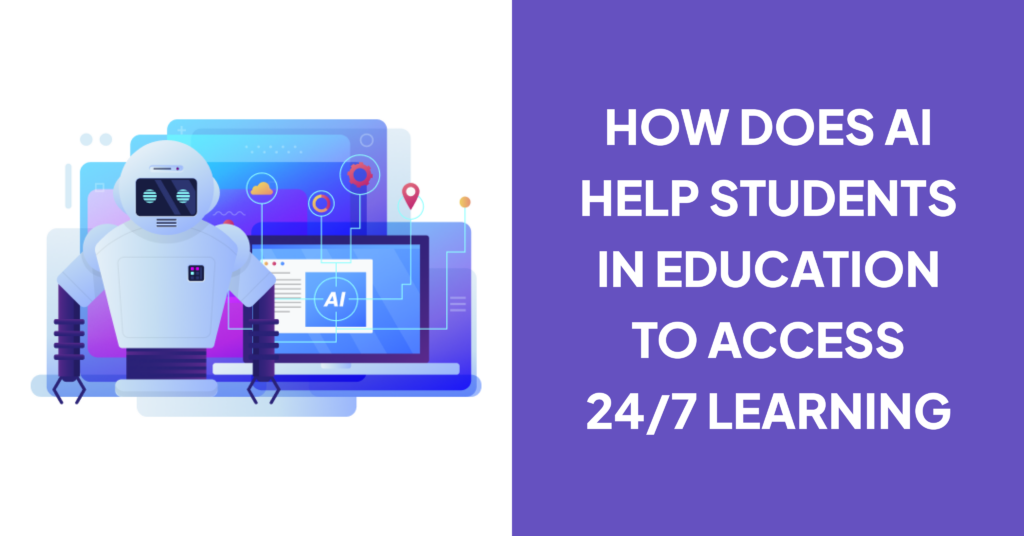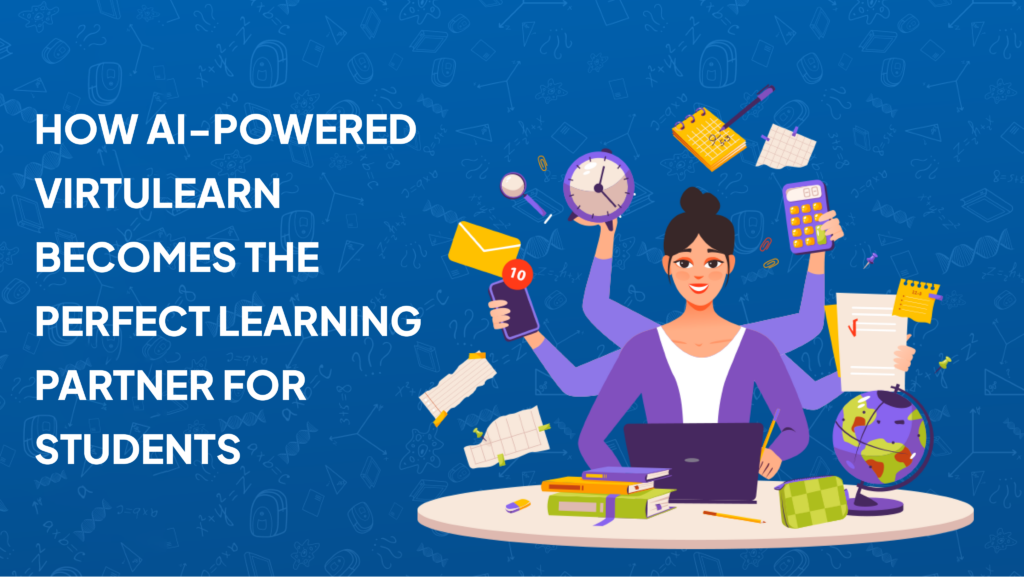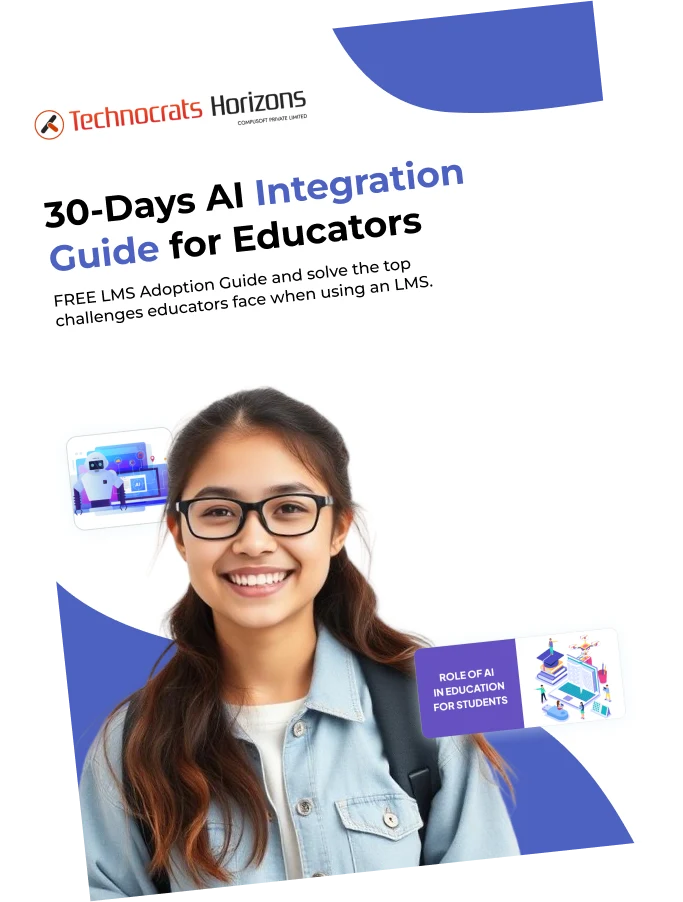A few decades back, students had fixed classroom timings, so they had to wait for the next class schedule to resolve their queries. Moreover, students had to travel for hours, which would become tiresome for students living away from the educational institutions.
With the advancement in time and technology, the concept of eLearning came into existence, where students could connect with their educators virtually and easily access numerous courses. However, the eLearning platforms were also initially bounded with time as students could connect with educators at scheduled times. But, the introduction of AI in eLearning brought a drastic change.
AI changed the way eLearning platforms used to operate. Moreover, with the help of AI, students get 24/7 access to online courses. The 24/7 learning accessibility allowed students to learn at their desired time.
Of course, you might wonder how AI has made 24/7 accessibility possible for students. Well, it’s because of the amazing features of AI that it happened.
Today, this blog will tell you how AI in eLearning can provide students with 24/7 access to learning. Besides you will also learn about a powerful eLearning solution, Virtulearn, and how it simplifies online learning for students.
Role of AI in Education for Students
Since its evolution, AI applications in education have drastically transformed the education industry. From initializing virtual classrooms to enhancing learning flexibility to tracking individual progress, AI has eased students’ lives to a greater extent.
A few decades back, students had to think about the travel expenses to learn to access any course globally. But today, students can access any international course in the comfort of their space.
Moreover, AI-powered learning provides global access to education and goes beyond that. Students can learn at their own pace and schedule without being bound by fixed classroom schedules. The AI-powered chatbots and virtual assistants provide 24/7 assistance to students to ensure no query is left unsolved.
The ease of accessibility is why students adapt to AI-powered learning systems instead of traditional learning. The 24/7 accessibility of education opens learning opportunities for students who are doing part-time jobs and want to enhance their skills and knowledge. Besides, AI-powered learning becomes an effective learning medium for students who can’t afford to travel to foreign countries or states to pursue international courses.
Besides, there are numerous benefits through which AI allows students to access and learn their desired courses at any time.
How Does AI Help Students in Education to Access 24/7 Learning
The importance of AI in the education industry is increasing every day. And this is obvious to happen because of the 24/7 accessibility AI provides. However, online learning involves several challenges, such as students’ difficulty understanding complex concepts.
Moreover, students may struggle to go through uncountable courses irrespective of their required learning needs. Also, the absence of physical teachers would prevent students from knowing their individual growth and progress.
With an AI eLearning platform, students can easily overcome all these challenges without compromising. Let’s see in detail how AI can overcome barriers for accessing education for students.
Creating Personalized Learning Paths
Undoubtedly, every student has different learning abilities. Some students might grasp even the most complex topics quickly, while others might need time to grasp them perfectly. In the case of eLearning, several students face challenges in accessing the courses based on their abilities.
However, AI apps for education simplify this very easily. AI-powered data analytics tools help analyze individual students’ strengths and weaknesses. Based on the analytics reports, AI would generate personalized learning roadmaps for individual students to help them gain knowledge based on their abilities.
For instance, if a student has difficulty understanding a particular concept, AI analyzes it and designs quizzes, interactive models, and guides to help the student understand the complex concept easily. So, AI tools in education are simplifying learning through personalization.
Virtual Tutors and Assistants
Perfect learning becomes impossible in the absence of a teacher. However, in the case of eLearning platforms, students faced numerous difficulties as teachers could not be available 24/7 to support them. But thanks to AI, teachers are available 24/7 through virtual tutors and chatbots.
The virtual tutors would identify the areas where students faced challenges and recommend courses based on their needs. Moreover, the AI-powered virtual tutors act as emergency friends for students who are always there to resolve their doubts and queries whenever the students need them.
Besides, the chatbots can easily guide students in finding suitable courses based on their learning goals and budget. And the biggest benefit of these virtual chatbots is that, unlike physical teachers, these virtual bots are available 24/7.
So, artificial intelligence learning platforms not only simplify the accessibility of courses but also simplify the accessibility of teachers 24/7 through virtual assistants.
Simplifying Complex Learning Through Interactive Learning
Students, of course, will face challenges in understanding complex topics. Moreover, students’ biggest challenge is keeping themselves engaged while learning online. There can be topics where students might feel bored while learning them.
In the case of traditional classrooms, teachers would make the class interactive through real-time examples and conversations to create an interactive and engaging learning environment. However, in the case of eLearning, having an interactive environment is quite challenging. However, AI makes it happen by including numerous interactive elements like quizzes, games, and multimedia content.
Moreover, AI educational apps also offer 3D visuals of complex subjects to make it easy for students to understand them while keeping them engaged. So, creating an interactive and engaging eLearning environment is also one of the biggest advantages of AI in education because students easily grasp complex subjects.
Curating and Managing Courses As per Individual Needs
eLearning platforms offer hundreds of courses that would eventually confuse the students while choosing the courses. With such confusion in minds, students would make the wrong choice.
However, AI helps students access the right courses by evaluating their learning needs and curating the course content accordingly. Content curation not only helps students choose the right courses but also helps them save a lot of time wasted while going through numerous courses before making the choice.
Besides content curation, AI also helps students manage their courses at a centralized location. Accessing courses from different locations would sometimes confuse students, and in this confusion, students would forget to access various courses.
To simplify this situation, AI organizes every course material, including videos and text-based guides, in a unified way, ensuring students can easily access their courses without being overwhelmed.
Providing Real-Time Feedback and Assessment
Feedback plays a key role in the success of eLearning. Real-time feedback helps students acknowledge their progress. It also helps students identify where they are falling back and plan impactful strategies to overcome such regions.
In the case of eLearning platforms, providing real-time feedback to individual students becomes challenging due to the large number of students involved.
However, AI makes it easier through its precise progress-tracking tools. AI would analyze the individual learner’s progress and identify the areas where the students are falling back. Finally, based on the progress report, AI will give necessary and personalized feedback to individual students on time to ensure they progress quickly.
AI will provide real-time insights and course recommendations to help individual students to improvise effectively.
Flexibility Through Round the Clock Accessibility
There were days when classrooms had fixed timings, which restricted students from accessing learning at their own pace.
But today, AI education provides flexibility to students to understand not only from their comfort space but also from their schedule without worrying about the unavailability of teachers or courses.
You might be wondering how AI is making it possible. Well, it’s because of the 24/7 availability of AI learning resources like videos, tutorials, articles, and other interactive course content on the eLearning platforms. One of the biggest advantages of artificial intelligence in education is students can access a wide pool of learning resources anytime without worrying about their busy schedules.
How AI-Powered Virtulearn Becomes the Perfect Learning Partner for Students
The accessibility of AI in the education industry has helped students enhance their eLearning experiences. One such powerful AI eLearning platform is Virtulearn. From delivering personalized recommendations to having interactive learning elements to ease of accessibility, Virtulearn becomes a perfect eLearning solution for students to learn anytime at the comfort of their pace. Here are some amazing features of Virtulearn that make it an ideal platform for learners to upskill themselves.
24/7 Accessibility and Easy Enrollment
Virtulearn’s motto is to simplify students’ lives in every possible way. That’s why it involves a seamless enrollment process through which students can sign up quickly and easily and access numerous courses. Besides, Virtulearn offers round-the-clock accessibility to multiple learning resources, allowing students to learn anytime.
Real-Time Progress Tracking
Knowing your learning progress is very important to understand where you fall back and where you need to improvise. Our AI-powered analytics tools thoroughly analyze your progress and check completed assignments. With the detailed report, you can identify the areas where you need to work harder. Progress tracking also helps keep students motivated and helps them easily design their learning roadmaps.
Personalized Course Recommendations
With each student having unique learning needs and goals, our AI-powered Virtulearn performs a detailed analysis of individual learners’ needs and preferences and would recommend courses based on the evaluation. Moreover, Virtulearn also identifies individual learners’ strengths and weaknesses and creates customized learning paths that contribute to personal growth.
Diverse Range of Courses
Virtulearn offers various courses, from free to paid to hybrid, to ensure every student can access classes according to their needs and budget. However, diversity doesn’t mean compromising in terms of course quality. Virtulearn offers well-curated courses based on your needs while providing flexibility to ensure you invest your time and money in the right learning resources.
Easy Payment and Subscription Models
The AI learning app Virtulearn aims to simplify students’ lives, so it offers simplified payment and subscription models to ensure students can easily access the courses they need. This allows students to focus more on appropriate course selection rather than worrying about the payment complexities.
Conclusion
AI is transforming how eLearning platforms work, but it is not limited to this transformation only. It goes beyond by bringing an impactful revolution in the lives of students. The benefits of
Artificial Intelligence in education includes designing individual learning paths, introducing interactive elements, and providing accessibility through virtual assistants, real-time feedback, and flexibility. Artificial Intelligence applications in the education industry are creating impactful transformations by providing numerous benefits.
Virtulearn is an AI-powered eLearning platform that simplifies the lives of both educators and students. From automating building eLearning courses for students to providing 24/7 accessibility, Virtulearn intends to help online educators and learners have an interactive yet enjoyable learning environment.
Eager to learn more about Virtulearn? Book a free demo to learn how Virtulearn can benefit the eLearning industry through its impactful features and functionalities.
AI is the future of technology! Adapt Now!
Get a free consultation to see how our AI experts can transform your business processes.
About The Author
Related Blogs
AI’s Role in Logistics and Supply Chain – Its Use Cases and Benefits
Unleashing the Power of AI in School Management Systems
AI Automation: The Complete Guide to Smarter Workflows & Efficiency



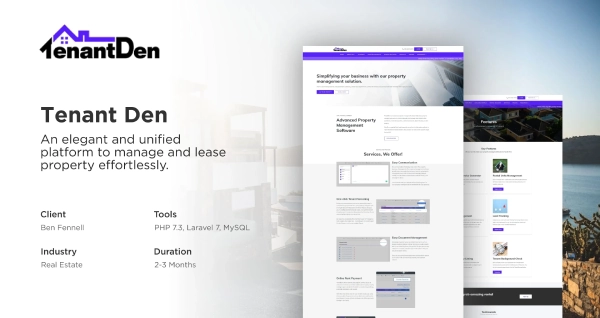


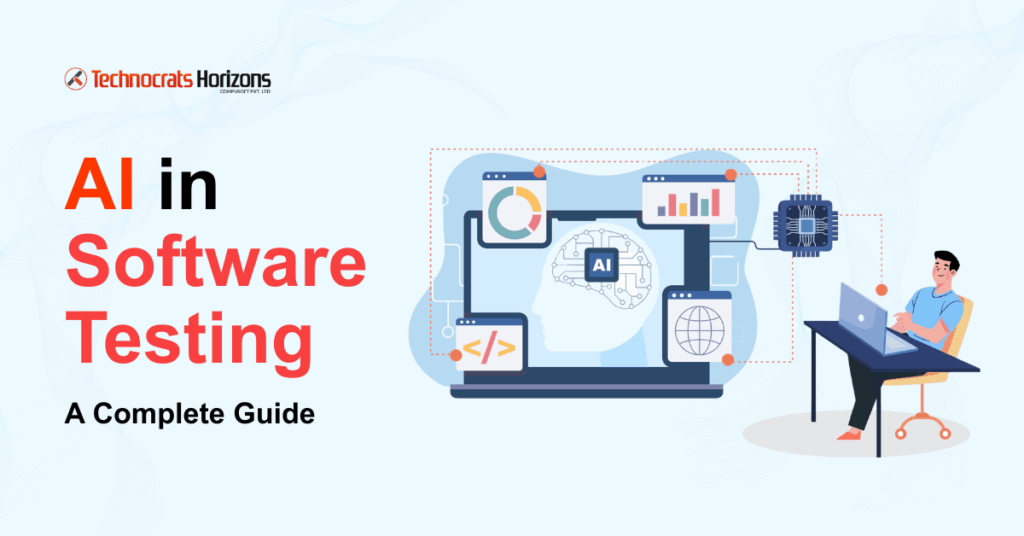
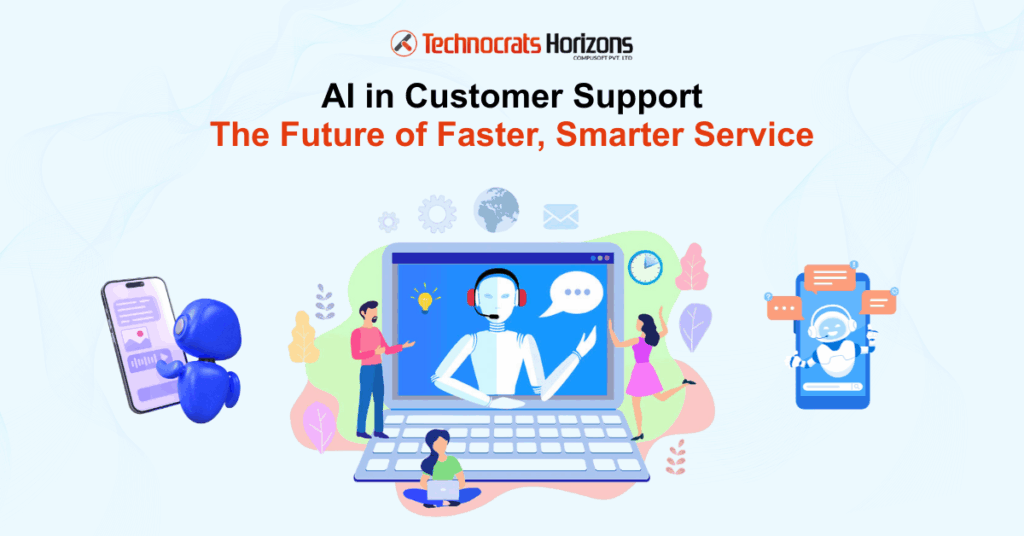

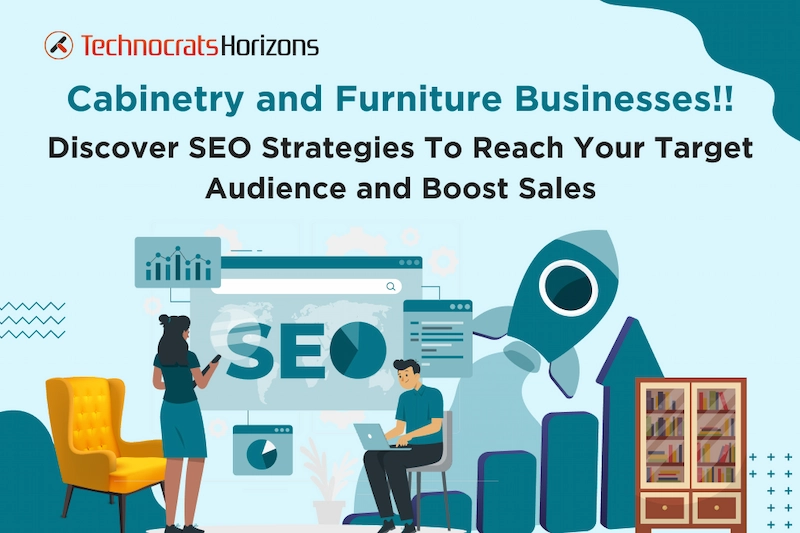
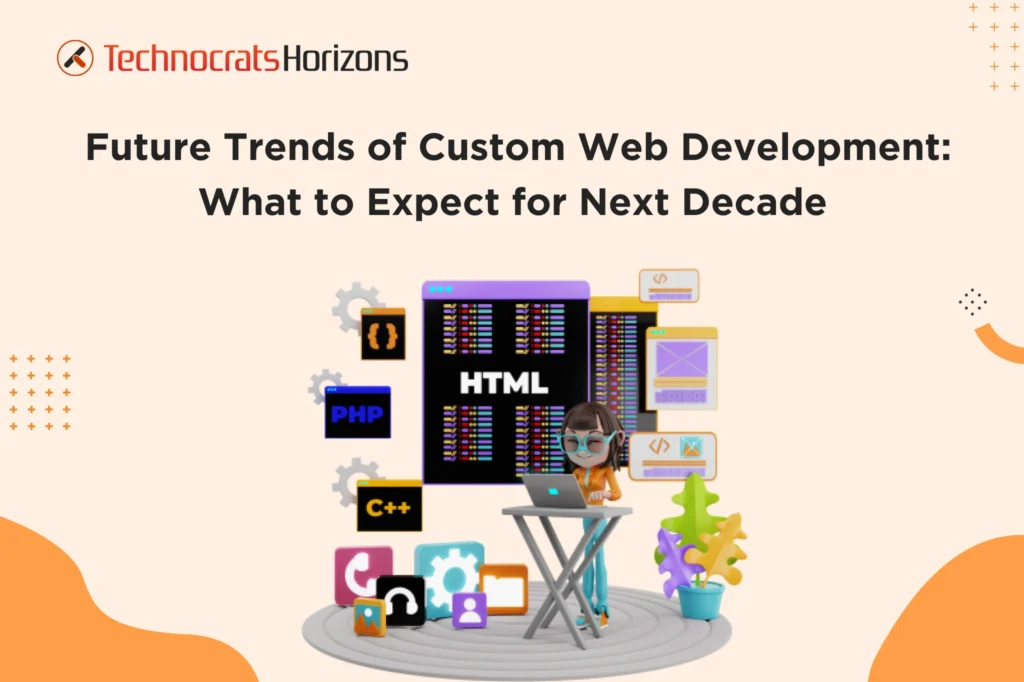
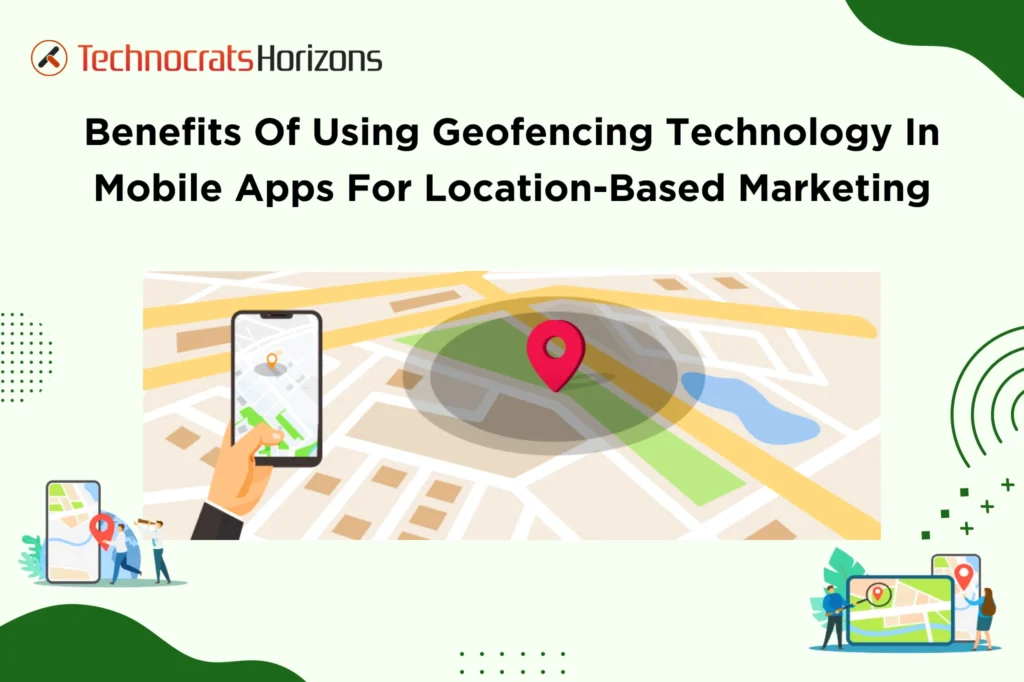
 Request a
Request a
















